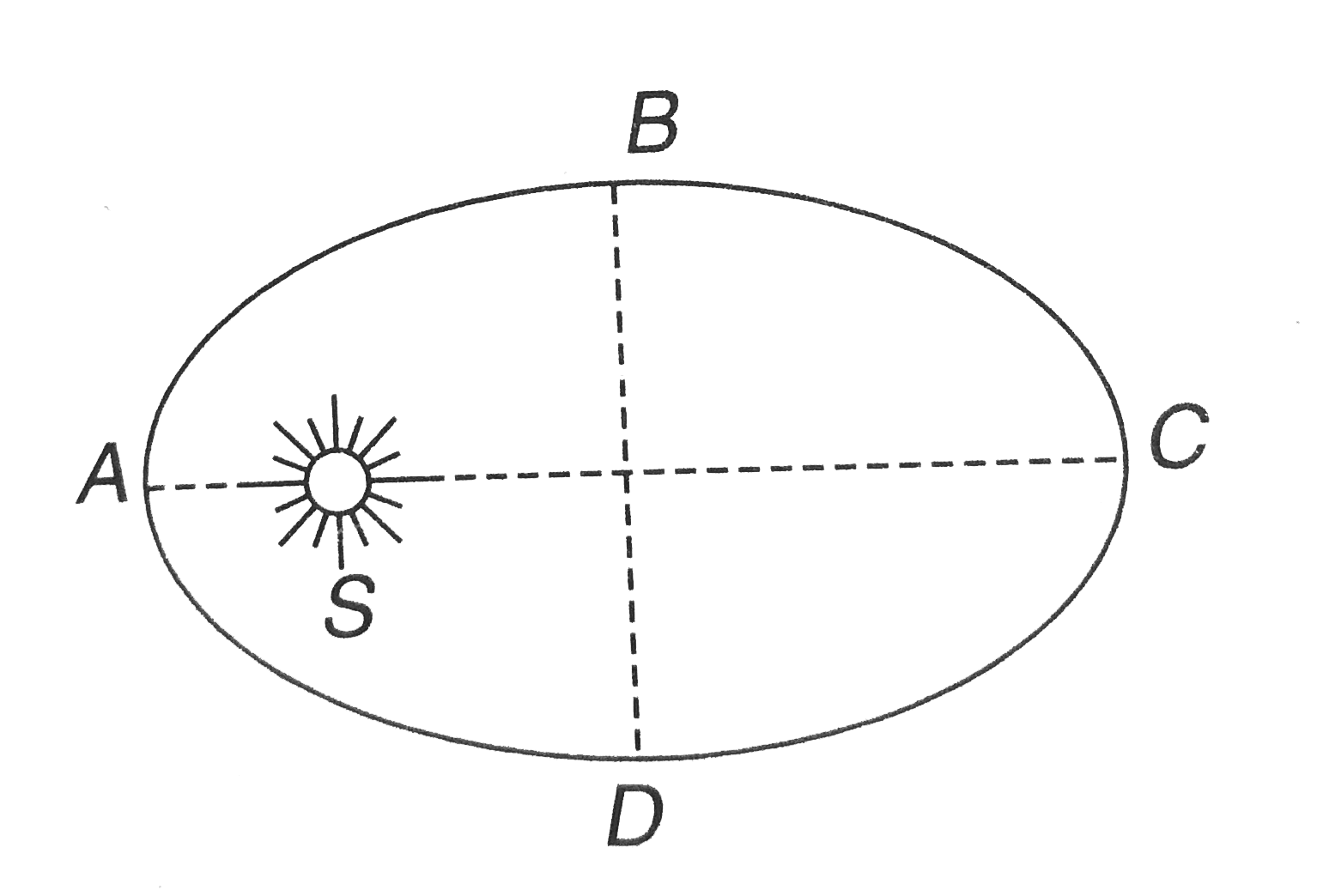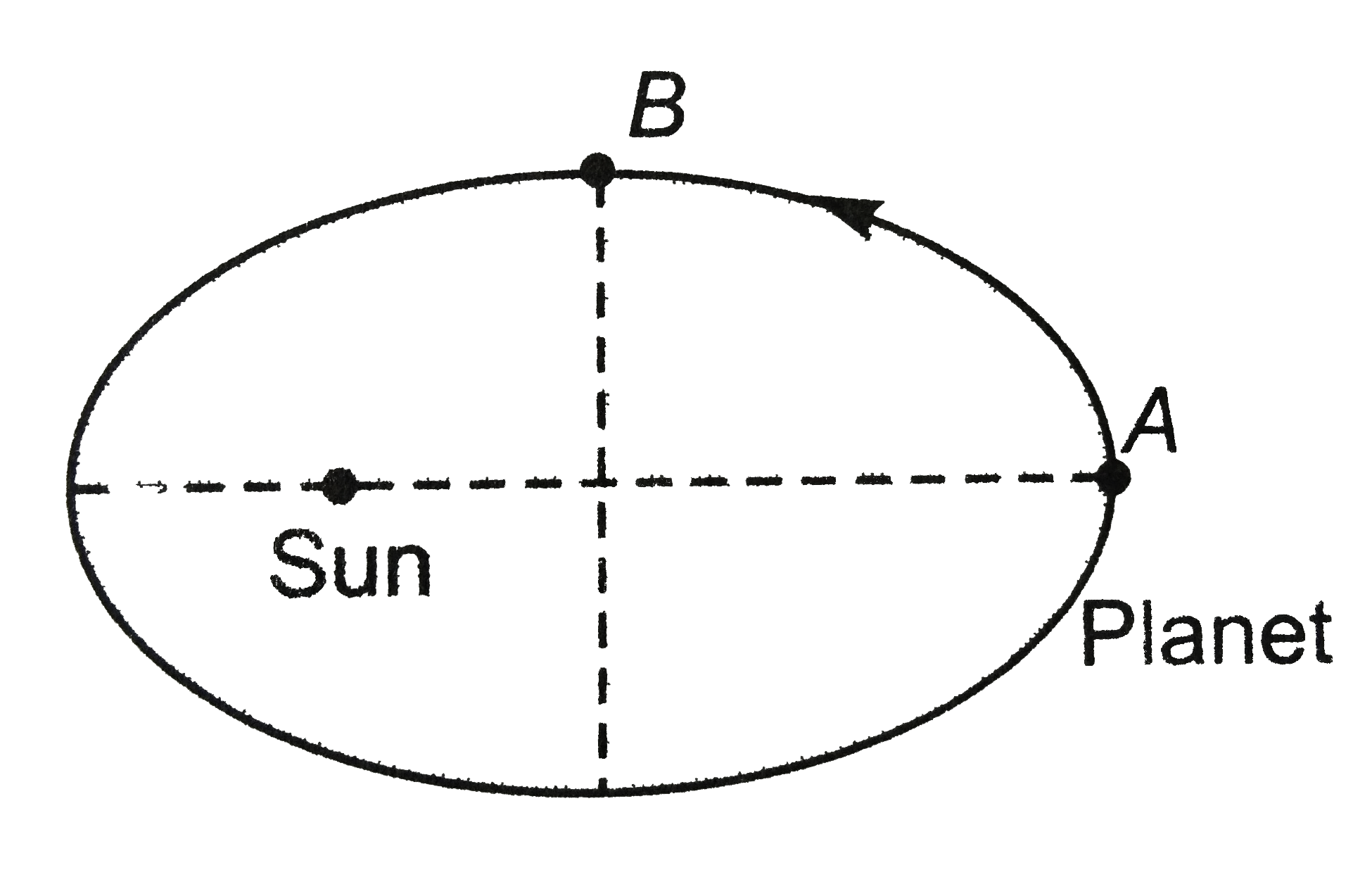A planet of mass M is revolving round the sun in an elliptical orbit. If its angular momentum is J then the area swept per second by the line joining planet to sun will be :-
JM
J2M
JM2
JM
The correct Answer is:B
To solve the problem, we need to find the area swept per second by the line joining the planet to the sun as the planet revolves in an elliptical orbit. We can use the concept of angular momentum and the relationship between angular momentum and area swept.
1. Understanding Angular Momentum:
The angular momentum J of a planet of mass M moving with a linear velocity V at a distance r from the sun is given by the formula:
J=M⋅V⋅r
2. Area Swept by the Radius Vector:
The area A swept out by the radius vector in a time interval dt can be represented as:
dA=12⋅r⋅V⋅dt
Here, 12⋅r⋅V represents the area of the triangle formed by the radius vector and the path of the planet during the time interval dt.
3. Area Swept per Second:
To find the area swept per second, we divide dA by dt:
dAdt=12⋅r⋅V
4. Substituting for V:
From the angular momentum equation, we can express V in terms of J and r:
V=JM⋅r
Substituting this into the area swept per second formula gives:
dAdt=12⋅r⋅(JM⋅r)
5. Simplifying the Expression:
The r in the numerator and denominator cancels out:
dAdt=12⋅JM
6. Final Result:
Therefore, the area swept per second by the line joining the planet to the sun is:
dAdt=J2M
Conclusion:
The area swept per second by the line joining the planet to the sun is given by:
J2M
The angular momentum J of a planet of mass M moving with a linear velocity V at a distance r from the sun is given by the formula:
J=M⋅V⋅r
The area A swept out by the radius vector in a time interval dt can be represented as:
dA=12⋅r⋅V⋅dt
Here, 12⋅r⋅V represents the area of the triangle formed by the radius vector and the path of the planet during the time interval dt.
To find the area swept per second, we divide dA by dt:
dAdt=12⋅r⋅V
From the angular momentum equation, we can express V in terms of J and r:
V=JM⋅r
Substituting this into the area swept per second formula gives:
dAdt=12⋅r⋅(JM⋅r)
The r in the numerator and denominator cancels out:
dAdt=12⋅JM
Therefore, the area swept per second by the line joining the planet to the sun is:
dAdt=J2M
The area swept per second by the line joining the planet to the sun is given by:
J2M
Topper's Solved these Questions
Similar Questions
Knowledge Check
- Question 1 - Select One
A planet of mass m is moving around the sun in an elliptical orbit of semi-major axis a :
AThe total mechanical energy of the planet is varying periodically with timeBThe total energ of the planet is constant and equals −GmMs2a,Ns is mass of sunCTotal mechanical energy of the planet is constant and equals −GmMsa,M2 is mass of sunDDate is insufficient of arrice at a conclusion - Question 2 - Select One
The earth revolves round the sun in an elliptical orbit. Its speed
Agoes on decreasing continuouslyBgreatest when it is closest to the sunCgreatest when it is farthest from the sunDconstant at all the points on the orbit - Question 3 - Select One or More
A planet is revolving round the sun in an elliptical orbit as shown in figure. Select correct alternative(s)
AIts total energy is negative at D.BIt s angular momentum is constantCNet torque on the planet about sun is zeroDLinear momentum of the planet is conserved
A planet is revolving around the sun as shown in elliptical path. The correct option is
 View Solution
View SolutionIf a planet of mass m is revolving around the sun in a circular orbit of radius r with time period, T then mass of the sun is
View SolutionWhen the earth revolves round the sun in an elliptical orbit, its kinetic energy is
View SolutionConsider a planet moving in an elliptical orbit around the Sun. The work done on the planet by the gravitational force of the Sun
View SolutionA planet is revolving round the sun in an elliptical orbit. Of the following the property which is a constant during the motion of the planet is :
View Solution


